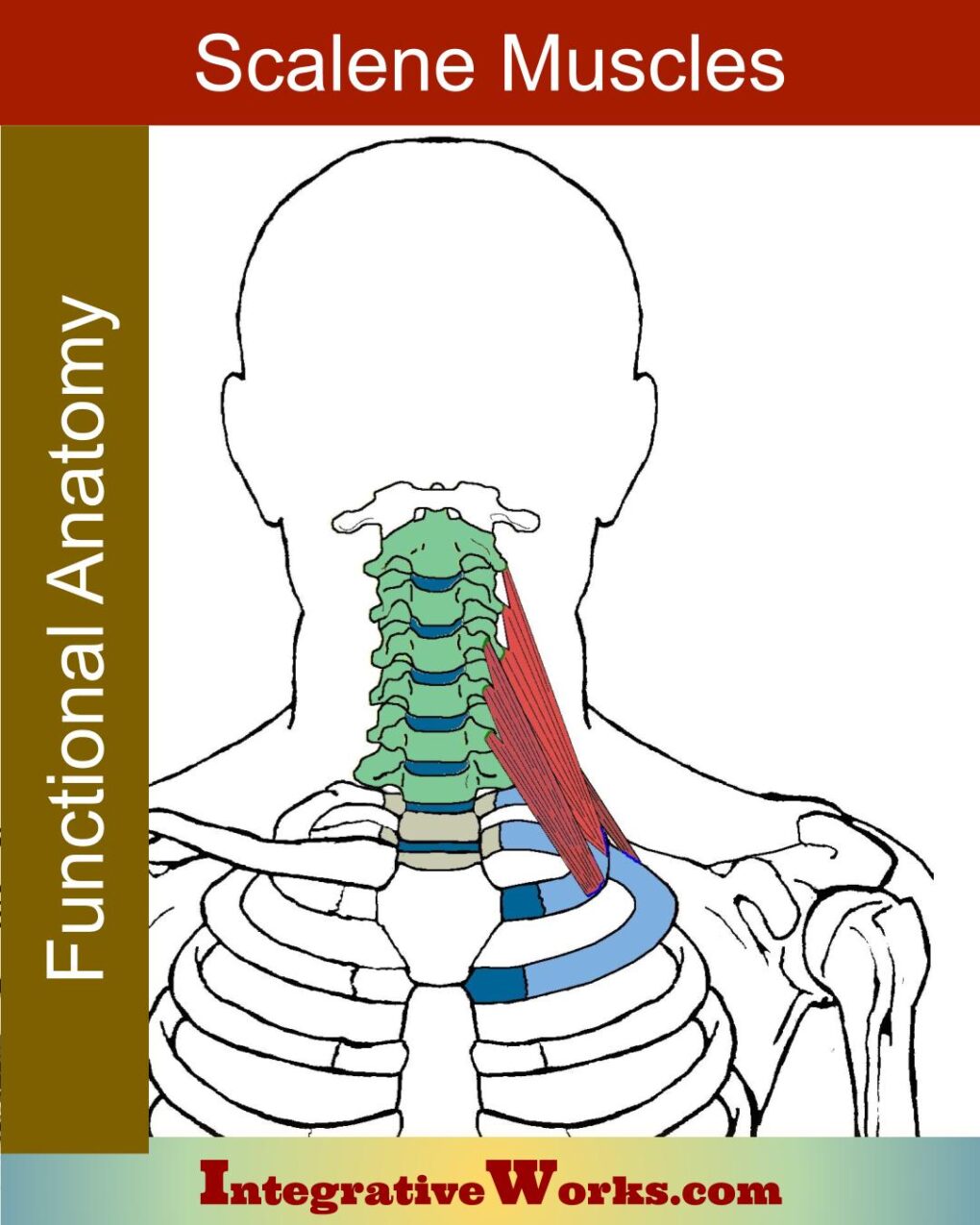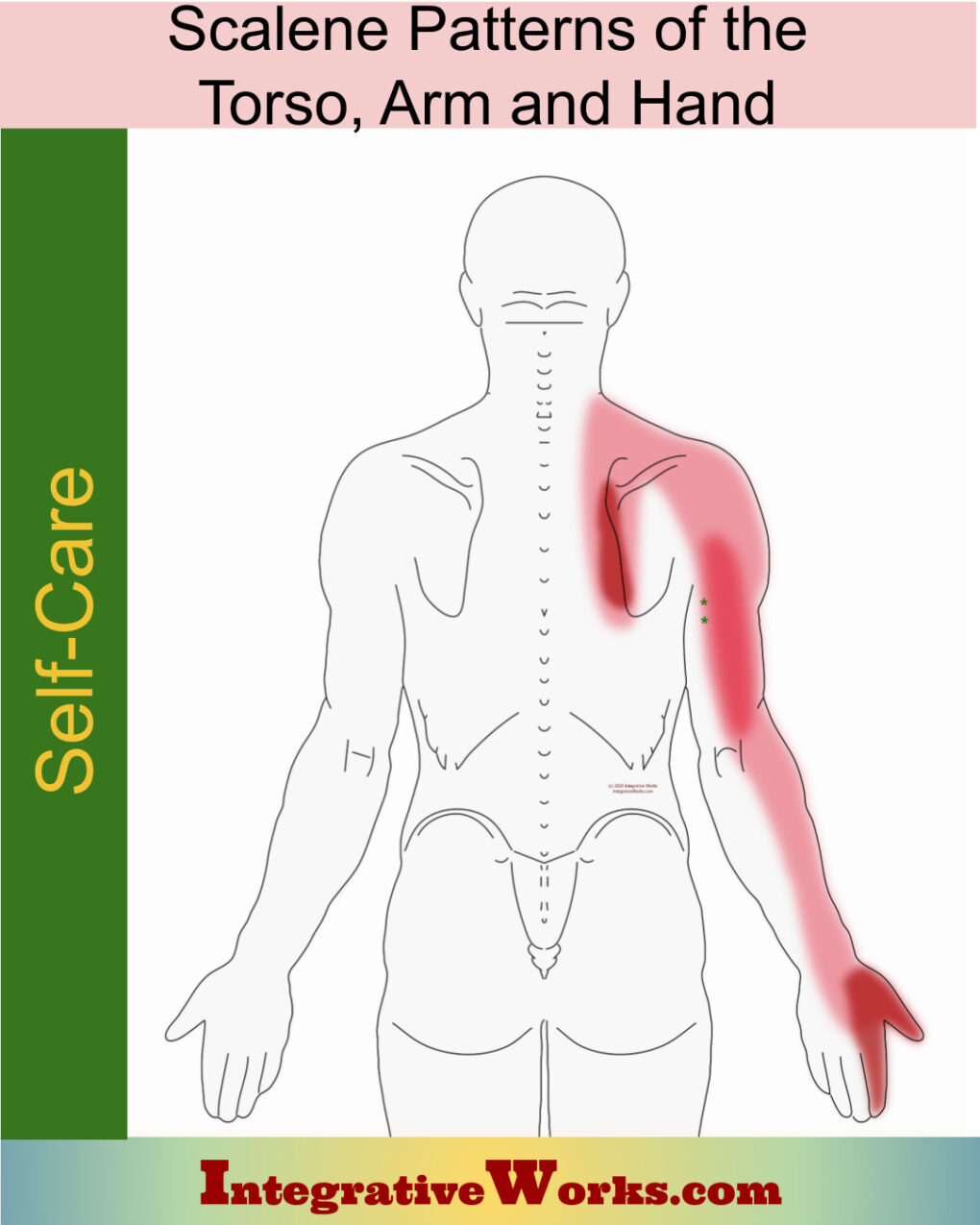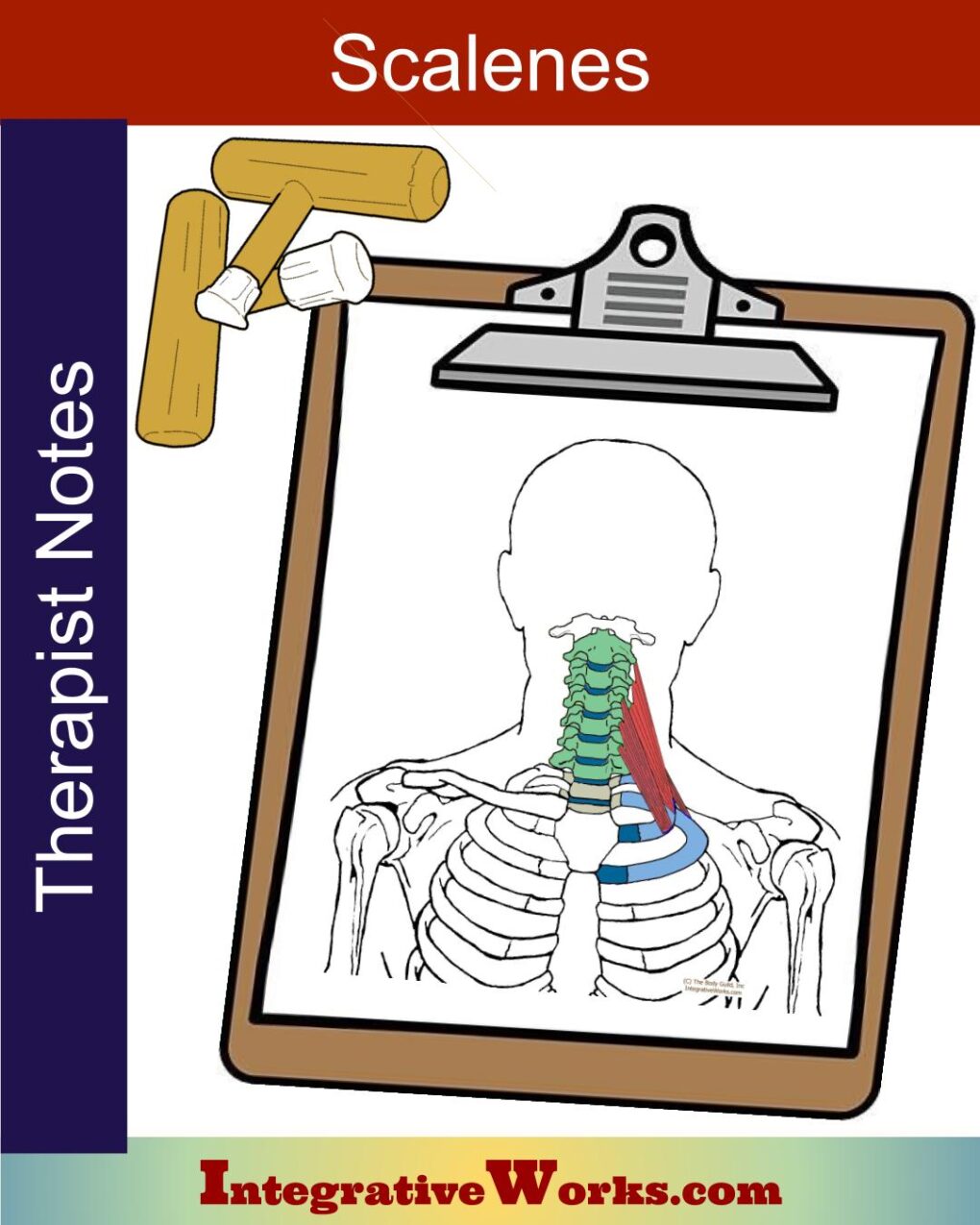Table of Contents
- How People Describe This Pain Pattern
- How You Activate and Intensify This Pain Pattern
- Self-Care – Getting Relief on Your Own
- Musculoskeletal Anatomy Behind Your Pain
- Therapy Notes for Massage and Bodywork
How People Describe This Pain Pattern

People complain about waking with stiff, swollen hands in the morning. Some of them have problems with tingling and sleeping hands in the night. They often get up and move their arms around until the tingling stops and the arms are awake again. Sometimes, they have stiff hands, pain, or tingling when they hold their arms near shoulder level. Typically, it happens when driving, putting on makeup, or cutting hair.
Focus of Pain
The pattern does not usually occur in full, as illustrated but as part of that pattern. As the illustration indicates, the pain, tingling, and “numbing” are most likely to occur in the darkest red areas. When there are stiff, swollen hands, the index finger and thumb sensations are a greater focus, although the tension behind the shoulder is often there. If I press into the muscle at the base of the neck, the client almost always describes the sensation between the shoulder blades and down the arm.
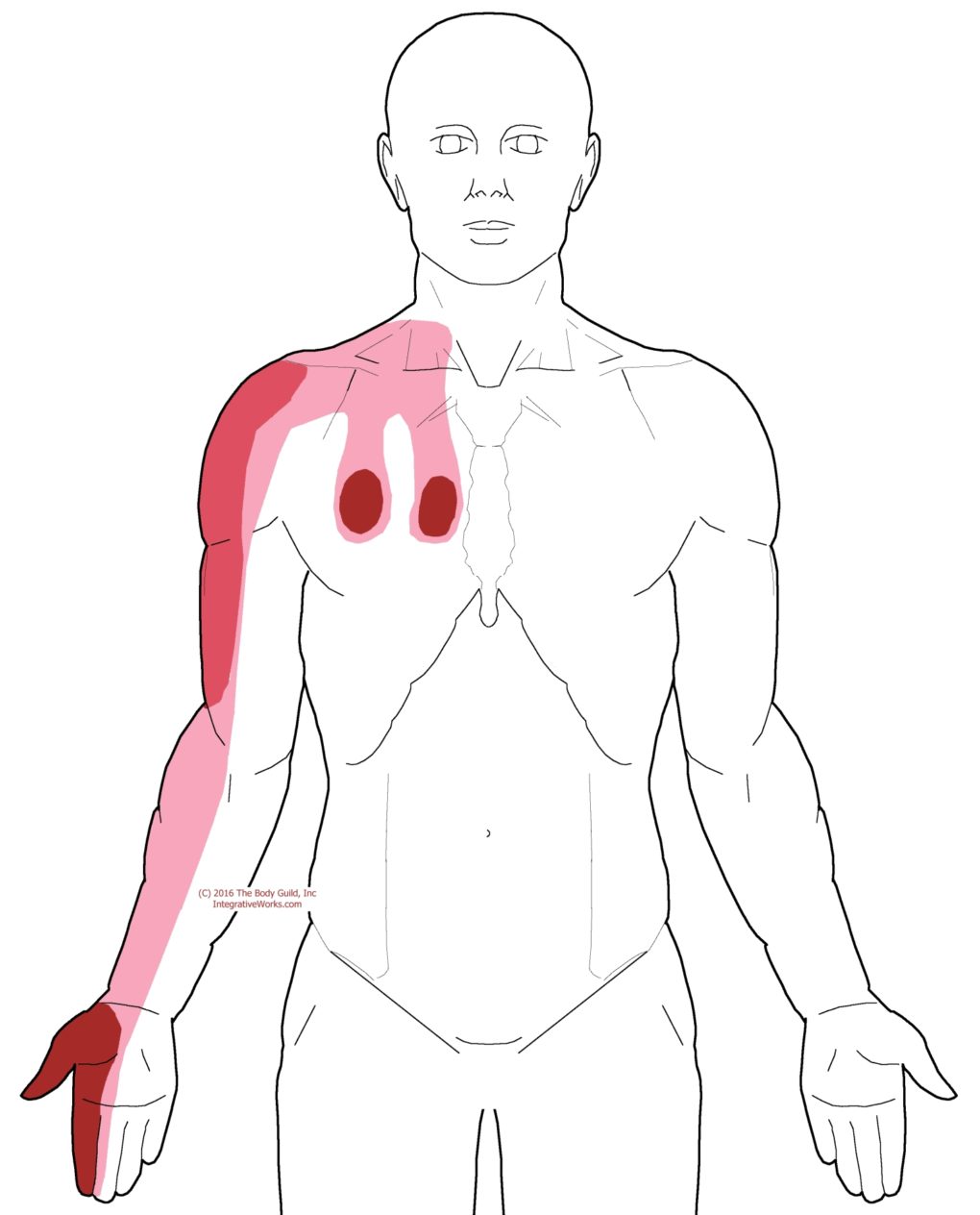
Seldom the Full Pattern
The patterns created by scalene muscles vary. Some people only have pain in the upper back. Others just have pain through the front of the shoulder. Some people only have pain in the upper back and chest.
Like Other Referral Patterns
When I was teaching neuromuscular technique, students were quick to say that the pattern was from the scalene muscles. It is important to look for supporting characteristics, like swollen hands, forward head posture, or arms that “fall asleep” at night.
Make sure to look at other post patterns about the pain that extends from the torso into the arm. You might find something more specific with more effective self-care.
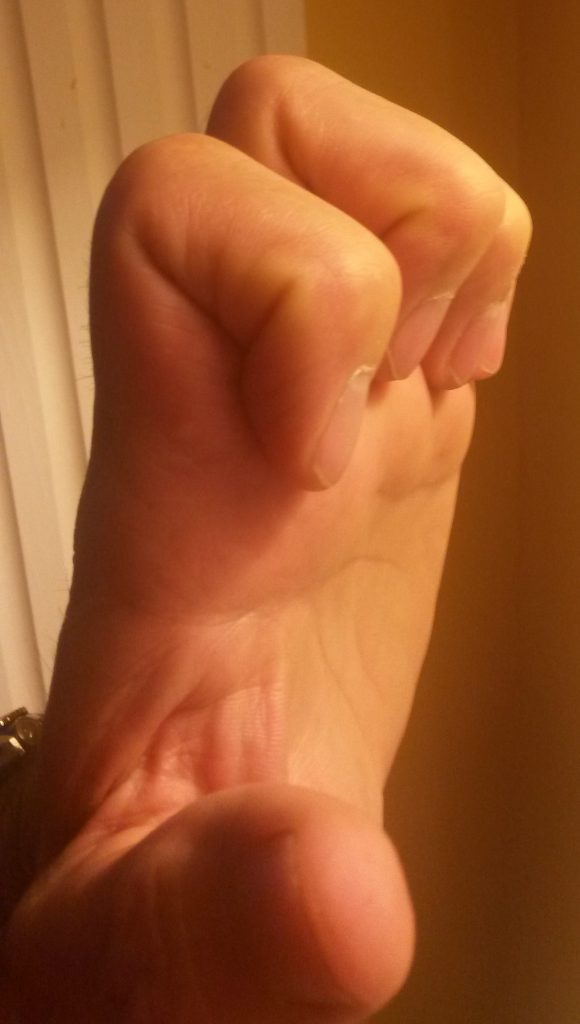
Test for Scalene TPs
See how the index finger’s pad (and other finger pads) can touch the finger’s base while the first knuckle stays straight? This indicates that scalenes are not involved in thoracic outlet restriction and contribute to swollen hands.
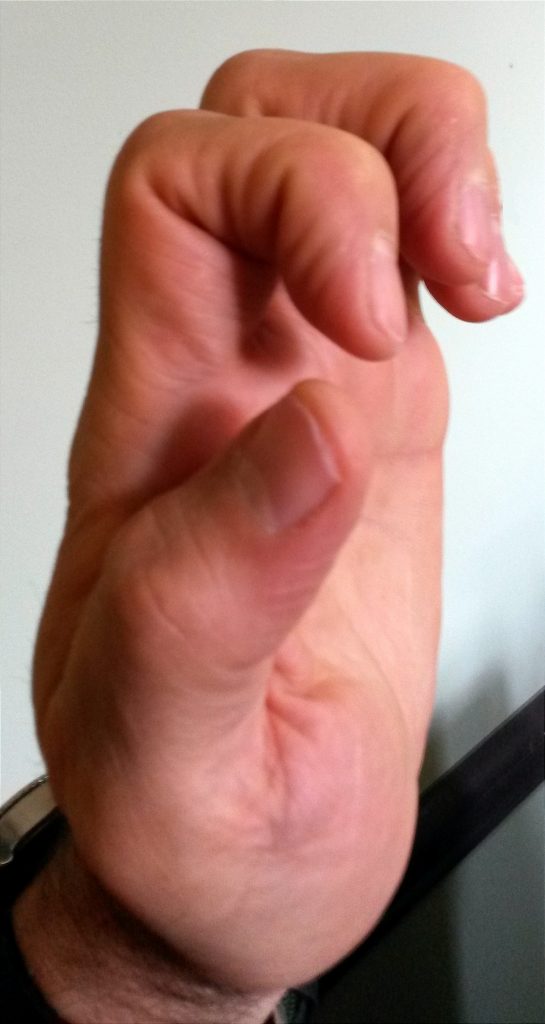
Scalene TP Indicator
This person is unable to touch the pad of the index finger to the base of the index finger while the fingers are held straight at the first knuckle. It is more than just the index finger. It can be stiffness and restriction in any, and usually all of the fingers. This is a strong indicator that scalenes are contributing to thoracic outlet dysfunction.
How You Activate and Intensify This Pain Pattern

Forward Head while Seated
The most common cases involve people that sit with their shoulders forward, so it isn’t easy to breathe with their diaphragm. The scalenes go from assistive breathing to primary respiratory muscles as they lift the upper ribs and collarbone to inhale. As a result, they get overworked, displace the upper ribs, and create chronic trigger point activity.
When they identify an activity, it usually involves sitting with their hands up in front of them. For example, this might be when driving with their arms at 10 & 2, working while slumped forward, rowing, or doing an activity that creates heavy breathing.
Other Symptoms
Another common report is that their arms go to sleep when they sleep on their back. This is because tight scalene muscles choke the neurovascular bundle that runs to your arms.
These muscles also assist with heavy breathing when sprinting or climbing stairs. People with this problem complain of tingling in their hands while huffing and puffing. This can also be a sign of thoracic outlet syndrome.
The Musculoskeletal Anatomy Behind Your Pain
Musculoskeletal Anatomy
This post on anatomy contains standard information about the origin, insertion, function, and innervation of muscles. Additionally, it includes information on functional considerations and anomalies.
Find Related Posts
Anatomy posts have a grid of all related posts. This includes posts on pain patterns, self-care, therapy notes, NMT protocols, cranial techniques, and cases.
Getting Relief on Your Own
Clinically Proven
Self-Care Strategies
Self-Care Posts have common sections to make them easy to follow and understand:
- Activities to Avoid or Change
- Strategies for Quick Relief
- Stretches and Exercise for Longer-Lasting Relief
- Yoga Corner
Therapy Notes for Massage and Bodywork
Better Bodywork
Through Shared Expertise
Therapy Notes provide details for cranial, spinal, and local joint work. These notes also link to a traditional neuromuscular protocol.
By treating integrative components first, direct work on the muscle becomes less intense while providing longer-lasting relief.
Support Integrative Works to
stay independent
and produce great content.
You can subscribe to our community on Patreon. You will get links to free content and access to exclusive content not seen on this site. In addition, we will be posting anatomy illustrations, treatment notes, and sections from our manuals not found on this site. Thank you so much for being so supportive.
Cranio Cradle Cup
This mug has classic, colorful illustrations of the craniosacral system and vault hold #3. It makes a great gift and conversation piece.
Tony Preston has a practice in Atlanta, Georgia, where he sees clients. He has written materials and instructed classes since the mid-90s. This includes anatomy, trigger points, cranial, and neuromuscular.
Question? Comment? Typo?
integrativeworks@gmail.com
Interested in a session with Tony?
Call 404-226-1363
Follow us on Instagram

*This site is undergoing significant changes. We are reformatting and expanding the posts to make them easier to read. The result will also be more accessible and include more patterns with better self-care. Meanwhile, there may be formatting, content presentation, and readability inconsistencies. Until we get older posts updated, please excuse our mess.

